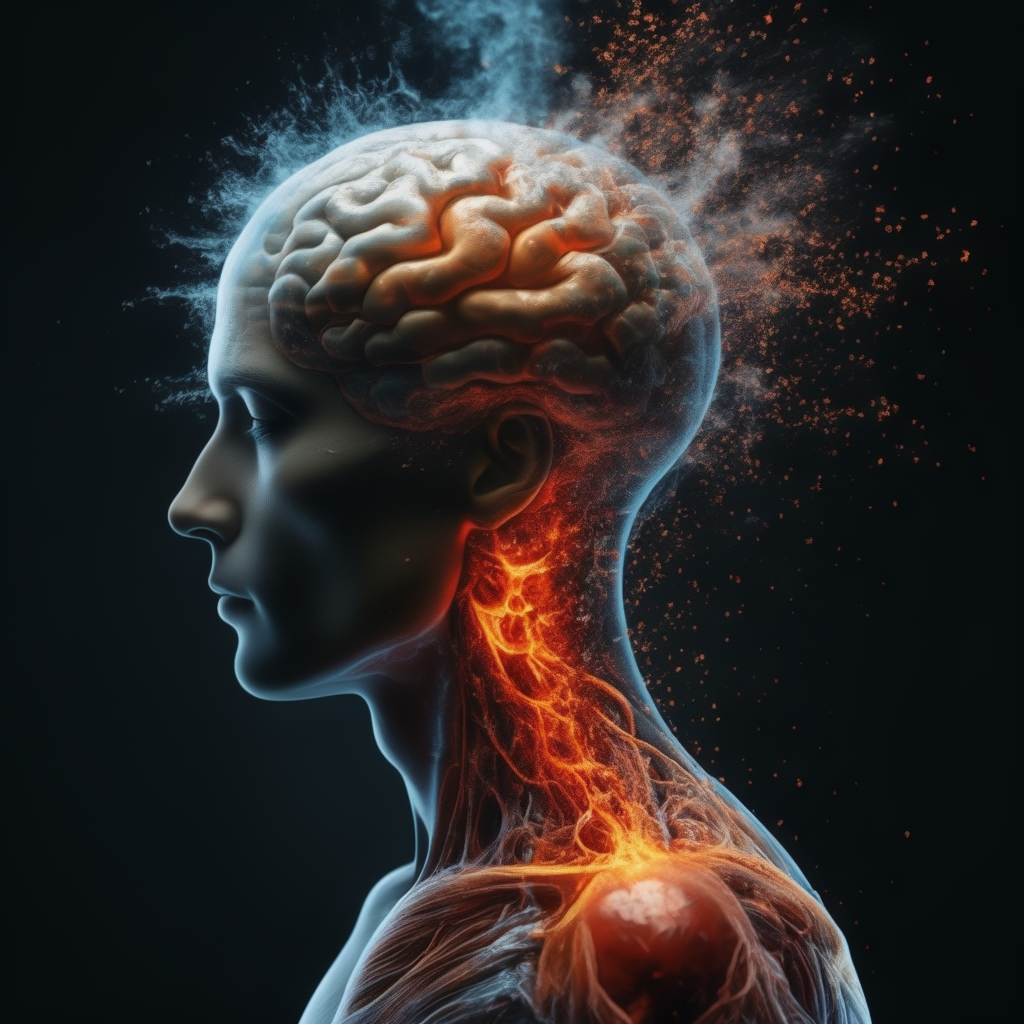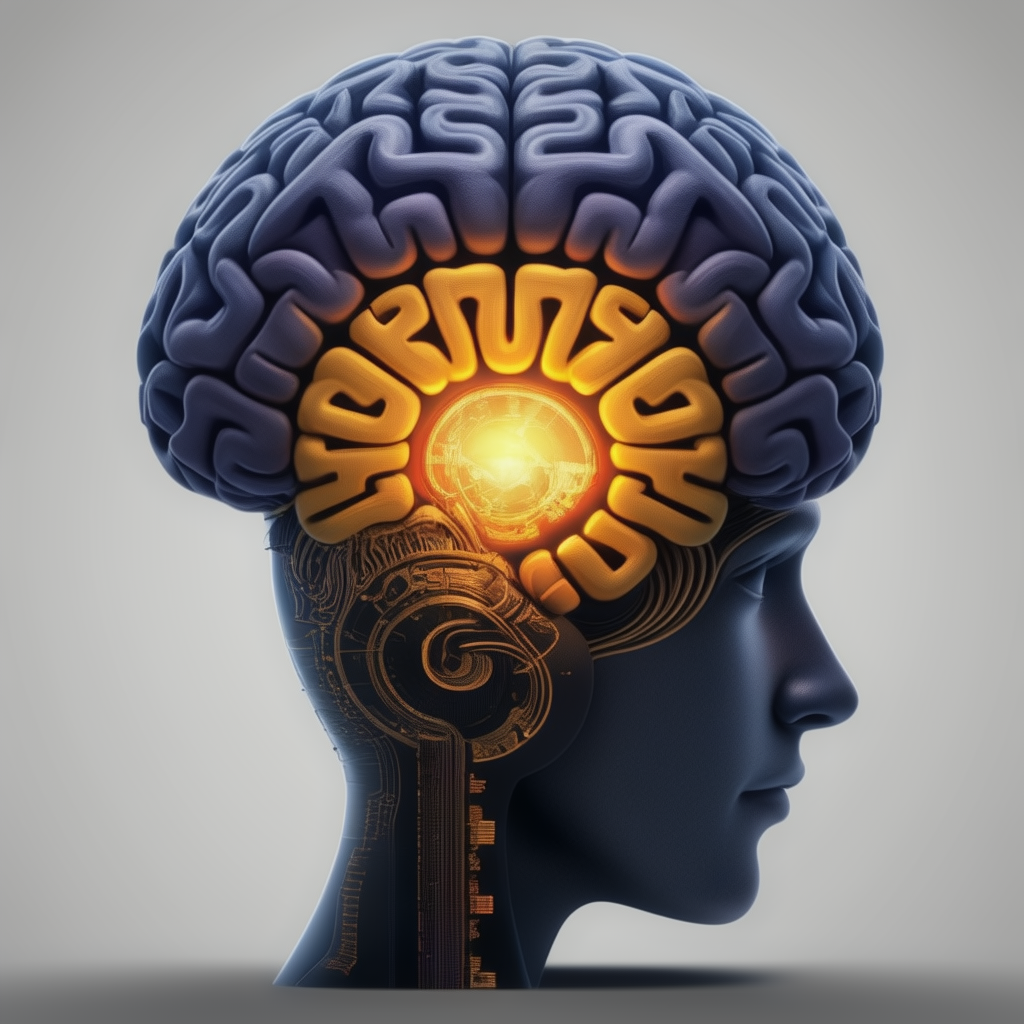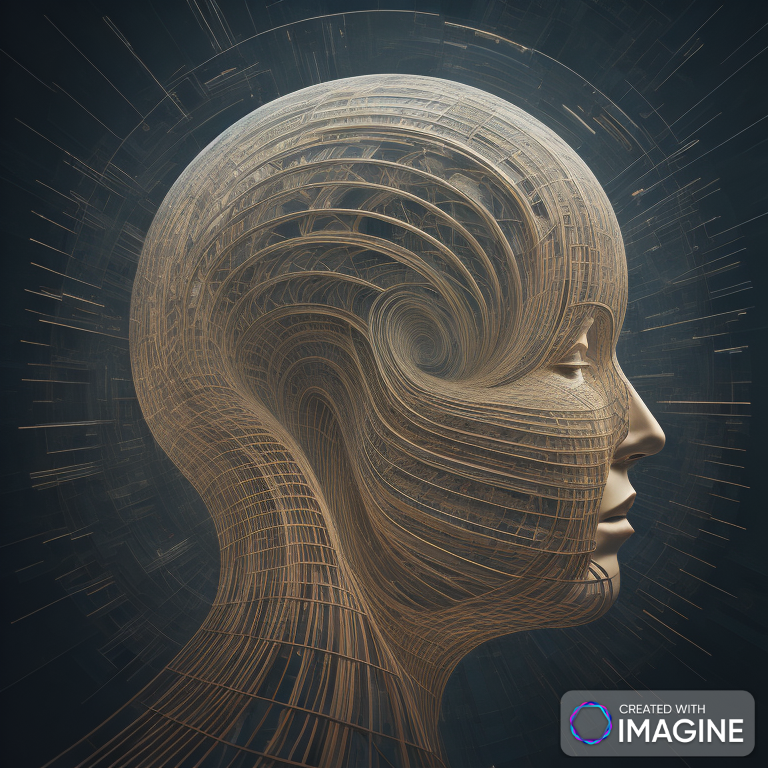Converging Technologies to Solve Neuropsychiatric and Mental Disorders
The field of neuropsychiatric and mental disorders encompasses a wide range of conditions, from Alzheimer’s disease and ADHD to Parkinson’s disease, depression, anxiety, and chronic stress. These disorders often have complex etiologies involving genetic, environmental, and neurochemical factors. In recent years, technological advancements have opened up new possibilities for understanding, diagnosing, and treating these conditions. This blog post will explore the convergence of cutting-edge technologies, including genetic engineering, quantum computing, CRISPR-Cas9, artificial intelligence (AI), blockchain, and other relevant technologies, to address neuropsychiatric and mental disorders.
Understanding Neuropsychiatric and Mental Disorders
Neuropsychiatric and mental disorders are conditions that affect mood, thinking, behavior, and overall mental health. They can result from genetic mutations, neurochemical imbalances, environmental factors, or a combination of these. Common disorders include:
- Alzheimer’s Disease: A progressive neurodegenerative disorder characterized by memory loss and cognitive decline.
- ADHD (Attention-Deficit/Hyperactivity Disorder): A condition marked by inattention, hyperactivity, and impulsivity.
- Parkinson’s Disease: A neurodegenerative disorder affecting movement and motor control.
- Depression: A mood disorder characterized by persistent feelings of sadness and loss of interest.
- Anxiety Disorders: Conditions involving excessive fear, worry, or anxiety.
- Chronic Stress: Prolonged and excessive stress response that can lead to various health issues.
Genetic Engineering and CRISPR-Cas9
Genetic engineering involves manipulating an organism’s DNA to alter its characteristics. In the context of neuropsychiatric and mental disorders, it offers potential for identifying and correcting genetic mutations associated with these conditions.
CRISPR-Cas9 Technology
CRISPR-Cas9 is a revolutionary gene-editing technology that allows precise alterations to DNA. It consists of two main components:
- Cas9 Enzyme: Acts as molecular scissors to cut DNA at specific locations.
- Guide RNA (gRNA): Directs Cas9 to the target DNA sequence.
Applications:
- Identifying Genetic Mutations: CRISPR can help identify genetic mutations linked to disorders like Alzheimer’s and Parkinson’s. For example, mutations in the APP, PSEN1, and PSEN2 genes are associated with Alzheimer’s, while mutations in the SNCA, PARK2, and LRRK2 genes are linked to Parkinson’s.
- Gene Therapy: CRISPR can potentially correct these mutations. For example, editing the APOE4 gene variant, a risk factor for Alzheimer’s, to a less harmful variant like APOE2 or APOE3, could reduce disease risk.
- Model Organisms: Creating animal models with specific mutations to study disease mechanisms and test new treatments.
Quantum Computing
Quantum computing leverages the principles of quantum mechanics to perform complex calculations at unprecedented speeds. This technology holds promise for revolutionizing the field of neuropsychiatric research and treatment.
Quantum Computing Applications
- Molecular Simulations: Quantum computers can simulate the behavior of molecules at the quantum level, providing insights into the molecular basis of disorders. For instance, simulating the misfolding of amyloid-beta proteins in Alzheimer’s can help identify new drug targets.
- Optimizing Drug Discovery: Quantum algorithms can optimize the process of drug discovery by rapidly screening vast libraries of compounds, predicting their interactions with biological targets, and identifying the most promising candidates.
- Data Analysis: Quantum computers can analyze large datasets, such as genomic data or brain imaging scans, to identify patterns and correlations that may be missed by classical computers.
Artificial Intelligence and Machine Learning
Artificial intelligence (AI) and machine learning (ML) are transforming the healthcare industry by providing powerful tools for diagnosis, treatment, and research.
AI and ML Applications
- Predictive Analytics: AI algorithms can predict the onset of neuropsychiatric disorders by analyzing electronic health records, genetic data, and other risk factors. For example, AI models can identify early signs of Alzheimer’s by analyzing speech patterns, motor function, and cognitive tests.
- Personalized Medicine: AI can analyze an individual’s genetic makeup, lifestyle, and other factors to recommend personalized treatment plans. This approach is particularly valuable for conditions like depression, where treatment responses vary widely among individuals.
- Neuroimaging Analysis: AI algorithms can analyze brain imaging scans to detect abnormalities, such as amyloid plaques in Alzheimer’s or structural changes in ADHD. These tools can aid in early diagnosis and treatment planning.
- Natural Language Processing (NLP): AI-powered NLP can analyze patient interviews, social media posts, and other text data to identify symptoms of mental disorders, providing a non-invasive and scalable diagnostic tool.
Blockchain Technology
Blockchain is a decentralized and secure digital ledger technology that can enhance data security, privacy, and interoperability in healthcare.
Blockchain Applications
- Secure Data Sharing: Blockchain can enable secure and transparent sharing of medical records, genetic data, and research findings. This is particularly important for neuropsychiatric research, where data privacy and security are paramount.
- Patient Consent and Data Ownership: Blockchain can provide patients with control over their data, allowing them to grant or revoke access to specific researchers or healthcare providers. This ensures that patients are actively involved in research and treatment decisions.
- Clinical Trials: Blockchain can improve the integrity and transparency of clinical trials by securely recording patient consent, trial protocols, and data. This reduces the risk of data manipulation and enhances trust in research findings.
Other Relevant Technologies
1. Neurotechnology
Neurotechnology includes tools and devices that interface with the nervous system. For example, brain-computer interfaces (BCIs) can help individuals with neurodegenerative disorders communicate or control devices using their brain signals. BCIs can also provide real-time monitoring of brain activity, aiding in the diagnosis and treatment of mental disorders.
2. Wearable Devices
Wearable devices, such as smartwatches and fitness trackers, can monitor physiological markers like heart rate, sleep patterns, and physical activity. These data can provide insights into a person’s mental health and help manage conditions like anxiety and chronic stress.
Global Strategies and Approaches
1. Integrative Care Models
Many countries are adopting integrative care models that combine traditional medicine, psychotherapy, lifestyle interventions, and technology-based solutions. For example, the United States has seen the rise of integrated mental health clinics that offer comprehensive care, including medication management, therapy, and digital health tools.
2. Public Health Initiatives
Public health initiatives, such as mental health awareness campaigns, early screening programs, and stigma reduction efforts, play a crucial role in addressing neuropsychiatric and mental disorders. Countries like Australia and Canada have implemented nationwide mental health strategies that focus on prevention, early intervention, and access to care.
3. Collaborative Research Networks
Collaborative research networks, such as the Human Brain Project in Europe and the Brain Initiative in the United States, are pooling resources and expertise to advance our understanding of the brain and develop new treatments for neuropsychiatric disorders.
The Role of Environment and Nutrition
1. Environmental Factors
Environmental factors, such as stress, trauma, and exposure to toxins, can contribute to the development of neuropsychiatric disorders. For example, chronic stress can lead to changes in brain structure and function, increasing the risk of depression and anxiety.
2. Nutrition
Nutrition plays a critical role in brain health. Diets rich in fruits, vegetables, whole grains, and omega-3 fatty acids support cognitive function and may reduce the risk of neuropsychiatric disorders. Conversely, diets high in processed foods, sugars, and unhealthy fats can impair brain function and exacerbate mental health issues.
Why Do People Lack Rational, Logical Attitudes?
Several factors can contribute to a lack of rational and logical attitudes, including:
- Cognitive Biases: These are systematic errors in thinking that affect decisions and judgments.
- Lack of Education: Insufficient education can limit critical thinking skills.
- Emotional Influences: Strong emotions can override rational thought processes.
- Genetic Predispositions: Some individuals may have a genetic predisposition toward impulsivity or risk-taking behaviors.
Developing an Analytical Mindset
Developing an analytical mindset involves cultivating critical thinking skills, questioning assumptions, and approaching problems systematically. Here are some strategies:
- Continuous Learning: Engage in lifelong learning and stay curious about the world.
- Mindfulness Practices: Mindfulness and meditation can improve focus and clarity of thought.
- Engage in Analytical Activities: Solve puzzles, play strategy games, and engage in debates.
- Reflective Practice: Reflect on your decisions and thought processes to identify areas for improvement.
Advanced Considerations in the Intersection of Technology and Neuropsychiatric Disorders
As we delve deeper into the intersection of advanced technologies and neuropsychiatric disorders, it is essential to consider the multi-faceted perspectives and emerging opportunities. This exploration not only includes technological advancements but also encompasses interdisciplinary knowledge, ethical considerations, business aspects, and global activities in this field.
Starting a Company in Neuropsychiatric Solutions: Knowledge, Team, Resources, and Skills
1. Essential Knowledge Areas:
- Neuroscience: Understanding brain structure and function, neurotransmission, neuroplasticity, and the neural basis of behavior and cognition.
- Genetics: Knowledge of genetic mutations, inheritance patterns, and gene-environment interactions relevant to neuropsychiatric disorders.
- Bioinformatics: Proficiency in analyzing large datasets, including genomic data, to identify biomarkers and therapeutic targets.
- Psychiatry and Psychology: Insights into the clinical presentation, diagnosis, and treatment of mental health disorders.
- Pharmacology: Understanding drug mechanisms, interactions, and the development of psychotropic medications.
- Artificial Intelligence and Machine Learning: Expertise in developing algorithms for predictive analytics, diagnostic tools, and personalized treatment plans.
- Quantum Computing: Familiarity with quantum algorithms and their applications in drug discovery and complex data analysis.
- Blockchain Technology: Knowledge of secure data sharing, patient consent, and data ownership mechanisms.
- Ethics and Compliance: Understanding of ethical issues, regulatory requirements, and data privacy laws.
2. Key Team Members:
- Neuroscientists and Neurobiologists: Experts in brain research and neurodegenerative diseases.
- Geneticists: Specialists in genetic disorders and gene-editing technologies.
- Data Scientists and Bioinformaticians: Professionals skilled in handling and analyzing big data.
- AI/ML Engineers: Developers with experience in creating AI-driven healthcare solutions.
- Pharmacologists and Chemists: Experts in drug development and chemical analysis.
- Clinical Psychologists and Psychiatrists: Clinicians with practical experience in diagnosing and treating mental health conditions.
- Regulatory Affairs Specialists: Professionals knowledgeable about healthcare regulations and compliance.
- Business Development and Marketing Professionals: Individuals experienced in the commercialization of healthcare products and services.
3. Resources and Infrastructure:
- Laboratories and Research Facilities: Equipped for genetic research, neuroimaging, pharmacological studies, and clinical trials.
- Computing Infrastructure: High-performance computing resources, including quantum computers, for data analysis and simulations.
- Data Security and Blockchain Platforms: To ensure secure handling and sharing of sensitive patient data.
- Funding and Investment: Securing capital from venture capitalists, grants, or partnerships with pharmaceutical companies and research institutions.
4. Skills and Expertise:
- Interdisciplinary Collaboration: Ability to work across multiple scientific and technical domains.
- Innovation and Problem-Solving: Creativity in developing novel solutions and overcoming technical challenges.
- Ethical Decision-Making: Navigating ethical dilemmas and ensuring patient safety and rights.
- Regulatory Navigation: Understanding and complying with healthcare regulations and standards.
- Communication: Effective communication with stakeholders, including patients, healthcare providers, investors, and regulators.
Evolutionary Theory, Genetics, and Neuroscience Principles
1. Evolutionary Theory:
- Adaptation and Survival: Understanding how evolutionary pressures have shaped the human brain, behavior, and susceptibility to neuropsychiatric disorders.
- Genetic Variability: Recognizing the role of genetic diversity in the population and its impact on individual differences in mental health and disease susceptibility.
2. Genetics:
- Genetic Mutations and Variants: Identifying specific genetic mutations associated with neuropsychiatric disorders, such as APOE4 in Alzheimer’s disease.
- Gene-Environment Interactions: Exploring how environmental factors, such as stress or toxins, interact with genetic predispositions to influence mental health.
3. Neuroscience Principles:
- Neural Circuits and Neuroplasticity: Investigating how changes in neural circuits contribute to mental health disorders and the potential for neuroplasticity-based interventions.
- Neurotransmitter Systems: Understanding the role of neurotransmitters like serotonin, dopamine, and glutamate in mood regulation and cognitive function.
4. Biology and Physics Principles:
- Biophysics of Brain Function: Exploring the physical and chemical processes underlying brain function, including ion channel dynamics, synaptic transmission, and neuroenergetics.
- Systems Biology: Integrating biological data to understand the complex interactions within the nervous system and their impact on mental health.
Global Landscape: Who is Doing What?
1. Leading Institutions and Companies:
- Neurotechnology Companies: Firms like Neuralink and Kernel are developing brain-computer interfaces (BCIs) for neuroprosthetics and cognitive enhancement.
- Pharmaceutical Giants: Companies like Eli Lilly, Pfizer, and Johnson & Johnson are involved in the development of drugs for neuropsychiatric disorders.
- Genomics and CRISPR Companies: CRISPR Therapeutics and Editas Medicine are pioneers in gene-editing technologies for therapeutic applications.
- AI in Healthcare: Google Health, IBM Watson Health, and startups like PathAI are leveraging AI for diagnostics and personalized medicine.
2. Research Initiatives and Collaborations:
- The Human Brain Project: A European initiative focused on understanding the human brain and developing brain-inspired computing.
- The Brain Initiative: A U.S. initiative aimed at revolutionizing our understanding of the brain through advanced technologies.
- International Collaboration: Organizations like the World Health Organization (WHO) and the Global Mental Health Initiative promote international cooperation in mental health research and care.
3. Innovative Approaches and Strategies:
- Precision Medicine: Tailoring treatments based on an individual’s genetic makeup, lifestyle, and environmental factors.
- Telemedicine and Digital Health: Expanding access to mental health care through telehealth platforms and digital therapeutics.
- Psychedelic Research: Exploring the therapeutic potential of psychedelics, such as psilocybin and MDMA, for conditions like depression and PTSD.
Environmental and Nutritional Considerations
1. Environmental Influences:
- Urbanization and Pollution: Examining the impact of urban living and environmental pollutants on mental health.
- Social Environment: The role of social support, community, and cultural factors in mental health and resilience.
2. Nutrition and Lifestyle:
- Dietary Patterns: Investigating the impact of diet, including the Mediterranean diet and ketogenic diet, on brain health.
- Physical Activity: The benefits of exercise in promoting neurogenesis and mental well-being.
- Sleep and Stress Management: The importance of sleep hygiene and stress reduction techniques, such as mindfulness and yoga.
Addressing the Lack of Rational and Logical Attitudes
1. Cognitive Biases and Heuristics:
- Understanding Cognitive Biases: Identifying common cognitive biases, such as confirmation bias and availability heuristic, that impair rational decision-making.
- Critical Thinking Training: Implementing educational programs to enhance critical thinking and analytical skills.
2. Socio-Cultural Factors:
- Cultural Beliefs and Norms: How cultural beliefs and societal norms influence attitudes toward mental health and logical reasoning.
- Education and Literacy: The role of education in fostering a scientific mindset and logical reasoning abilities.
Conclusion
The convergence of technologies like genetic engineering, quantum computing, CRISPR-Cas9, AI, and blockchain holds immense promise for tackling neuropsychiatric and mental disorders. However, the successful development and application of these technologies require a multidisciplinary approach, encompassing expertise in neuroscience, genetics, pharmacology, AI, ethics, and more.
For entrepreneurs and innovators entering this field, a deep understanding of the scientific principles, ethical considerations, and regulatory landscape is crucial. Furthermore, considering the impact of environmental and nutritional factors, as well as addressing cognitive biases and socio-cultural influences, is essential for developing holistic and effective solutions.
Globally, numerous institutions, companies, and research initiatives are pioneering innovative approaches to understand and treat neuropsychiatric disorders. By leveraging the power of advanced technologies and interdisciplinary collaboration, we can make significant strides in improving mental health and well-being, offering new hope for millions affected by these conditions.
The Energetic Nature of the Human Body and Mind
The human body and mind are fundamentally energetic systems, where electrical impulses and biochemical reactions drive physiological and psychological functions. This understanding extends to the brain, where energy flow and distribution play critical roles in maintaining mental health and cognitive abilities. Emerging research suggests that disruptions in energy flow, particularly in certain brain regions, can contribute to neuropsychiatric conditions such as ADHD, stress, and anxiety.
Energy Flow in the Brain
1. Brain Energy Metabolism:
- The brain is an energy-intensive organ, consuming about 20% of the body’s total energy despite accounting for only about 2% of body weight. Neurons rely heavily on glucose and oxygen to produce ATP, the energy currency of cells, through oxidative phosphorylation in mitochondria. Disruptions in this process can lead to insufficient energy availability, impacting cognitive and emotional functions.
2. Electrical Activity and Brain Function:
- Neuronal communication depends on the generation and propagation of electrical signals, known as action potentials. These signals facilitate the release of neurotransmitters, enabling synaptic transmission. Adequate energy is required to maintain the resting membrane potential and support the active transport mechanisms that regulate ion gradients across neuronal membranes. Inadequate energy supply can impair these processes, leading to functional deficits in brain regions like the prefrontal cortex (PFC), which is crucial for executive functions.
Role of HPA Axis and Autonomic Nervous System
1. Hypothalamic-Pituitary-Adrenal (HPA) Axis:
- The HPA axis is a central component of the body’s stress response system. Activation of the HPA axis leads to the release of cortisol, a hormone that mobilizes energy resources and modulates various physiological functions. Chronic stress can dysregulate the HPA axis, resulting in elevated cortisol levels, which can negatively impact brain regions involved in emotion regulation, memory, and executive function. Dysregulation of the HPA axis has been linked to conditions like anxiety, depression, and PTSD.
2. Parasympathetic Nervous System (PNS):
- The PNS, a component of the autonomic nervous system, plays a role in conserving energy and promoting relaxation. It counteracts the sympathetic nervous system’s “fight or flight” response, facilitating recovery and energy restoration. The PNS supports functions such as digestion, immune response, and energy storage. Proper functioning of the PNS is crucial for maintaining homeostasis and resilience to stress.
Gut-Brain Axis and Brain Development
1. Gut Health and the Microbiome:
- The gut-brain axis refers to the bidirectional communication network between the gastrointestinal tract and the central nervous system. The gut microbiome, a diverse community of microorganisms in the digestive tract, plays a pivotal role in this communication. The microbiome influences brain function through various mechanisms, including the production of neurotransmitters, modulation of immune responses, and regulation of the HPA axis. Dysbiosis, or an imbalance in the gut microbiome, has been associated with neuropsychiatric disorders such as autism, depression, and anxiety.
2. Brain Development and Energy Processing:
- Brain development, particularly in areas like the PFC, involves complex processes that require substantial energy resources. The PFC is responsible for higher-order cognitive functions, including planning, decision-making, attention, and social behavior. During development, the brain undergoes synaptic pruning and myelination, processes that enhance neural efficiency and connectivity. Adequate energy availability is critical for these developmental processes, and disruptions can lead to cognitive and behavioral impairments.
Energy Distribution and Cognitive Function
1. Prefrontal Cortex (PFC) and Executive Functions:
- The PFC is a key region for executive functions, which encompass planning, organization, problem-solving, and goal-directed behavior. Energy deficits in the PFC can impair these functions, contributing to symptoms observed in ADHD, such as inattention, impulsivity, and difficulty with task execution. Enhancing energy supply to the PFC, through metabolic interventions or improved glucose delivery, may support cognitive function.
2. Sustaining Attention and Learning:
- Sustained attention requires continuous engagement of neural circuits, particularly those involving the PFC and parietal cortex. Energy deficits can lead to lapses in attention and difficulty maintaining focus. Efficient energy utilization and distribution are also essential for learning and memory consolidation, processes that involve synaptic plasticity and the strengthening of neural connections.
Global Research and Innovations
1. Exploring Energy Deficits in Neuropsychiatric Disorders:
- Researchers worldwide are investigating the link between energy metabolism and neuropsychiatric conditions. Studies have identified mitochondrial dysfunction, impaired glucose metabolism, and altered cerebral blood flow as potential contributors to disorders like ADHD, depression, and Alzheimer’s disease. Innovations in neuroimaging and metabolic monitoring are providing new insights into these processes.
2. Nutritional Interventions:
- Nutrition plays a crucial role in supporting brain energy metabolism. Diets rich in essential nutrients, such as omega-3 fatty acids, B vitamins, and antioxidants, can enhance brain function and protect against neurodegeneration. The ketogenic diet, which increases ketone bodies as an alternative energy source, has shown promise in managing epilepsy and may have potential applications in other neuropsychiatric conditions.
3. Neurostimulation and Neuromodulation:
- Techniques like transcranial magnetic stimulation (TMS) and transcranial direct current stimulation (tDCS) are being explored to modulate brain activity and improve cognitive function. These approaches can enhance or inhibit neuronal firing in targeted brain regions, potentially restoring energy balance and alleviating symptoms of neuropsychiatric disorders.
Considerations for Entrepreneurs in Neuropsychiatric Technologies
1. Interdisciplinary Expertise:
- Successful ventures in this field require a multidisciplinary team with expertise in neuroscience, genetics, bioinformatics, data science, and clinical psychology. Knowledge of emerging technologies, such as CRISPR and AI, is also critical.
2. Ethical and Regulatory Considerations:
- Developing interventions for neuropsychiatric disorders involves navigating complex ethical issues, particularly concerning genetic modifications and data privacy. Regulatory compliance with healthcare standards and approval processes is essential for bringing new therapies to market.
3. Business and Market Strategy:
- Entrepreneurs should identify unmet needs in the market and develop products that offer innovative solutions. Collaboration with academic institutions, pharmaceutical companies, and healthcare providers can facilitate research and development. Additionally, securing funding from investors and grants is crucial for sustaining research efforts and scaling operations.
4. Evolutionary and Biological Perspectives:
- Understanding the evolutionary basis of brain function and behavior can inform the development of interventions that align with natural physiological processes. Insights from biology and genetics can guide the selection of therapeutic targets and the design of personalized treatment strategies.
Conclusion
The integration of genetic engineering, quantum computing, CRISPR, AI, and other advanced technologies offers transformative potential in addressing neuropsychiatric and mental disorders. By harnessing these technologies, we can develop novel diagnostics, personalized therapies, and preventive measures that address the root causes of these conditions. The journey toward these innovations requires a deep understanding of the energetic nature of the brain, the role of the HPA axis and autonomic nervous system, and the influence of the gut-brain axis and nutrition. Entrepreneurs in this field must be equipped with interdisciplinary knowledge, ethical foresight, and a commitment to improving mental health outcomes worldwide.
The convergence of advanced technologies offers unprecedented opportunities to understand and treat neuropsychiatric and mental disorders. By integrating genetic engineering, quantum computing, CRISPR-Cas9, artificial intelligence, blockchain, and other technologies, we can develop more effective and personalized approaches to these complex conditions. However, a holistic approach that considers environmental, nutritional, and psychological factors is also essential. Through global collaboration, public health initiatives, and a focus on continuous learning and self-awareness, we can make significant strides in improving mental health and well-being worldwide.







